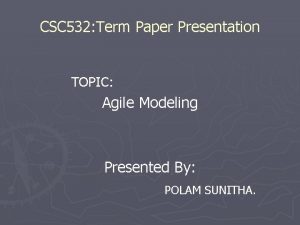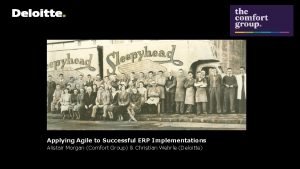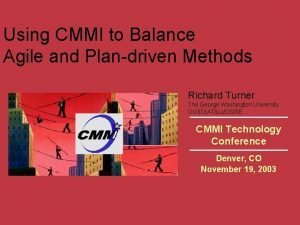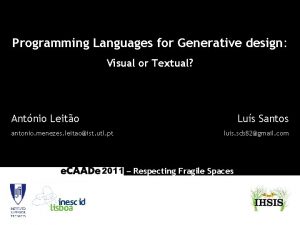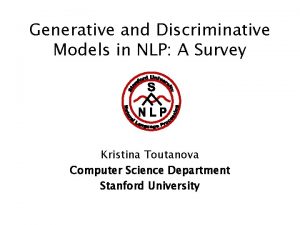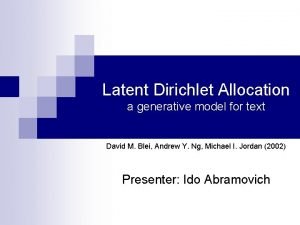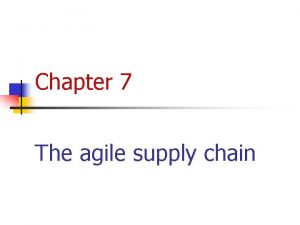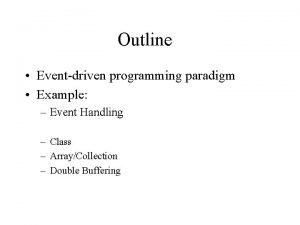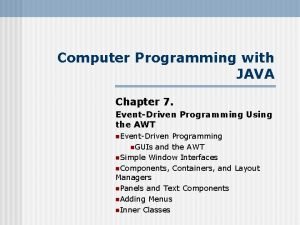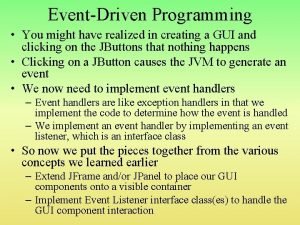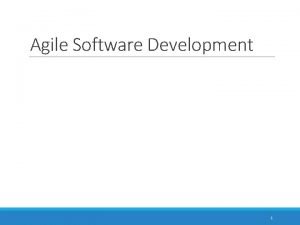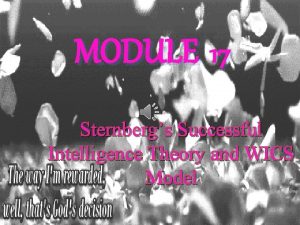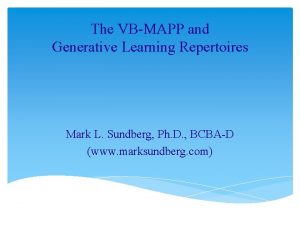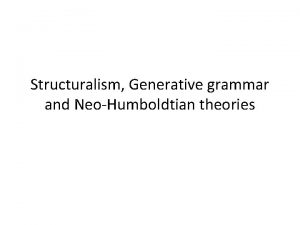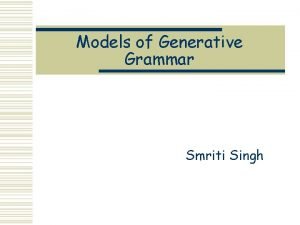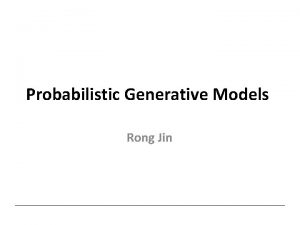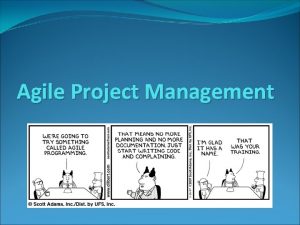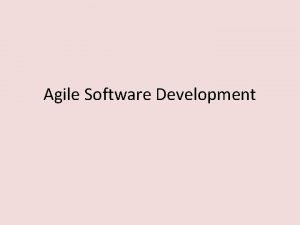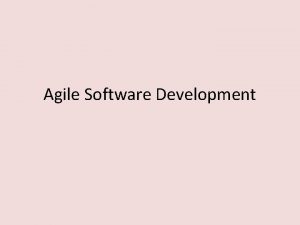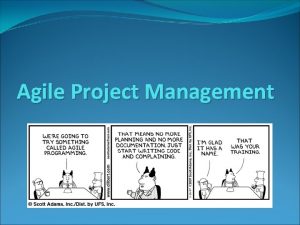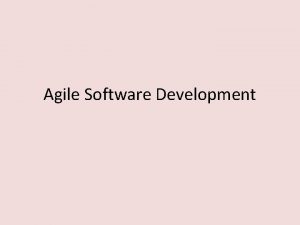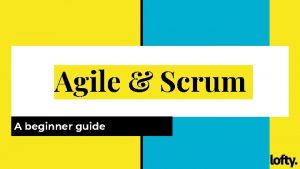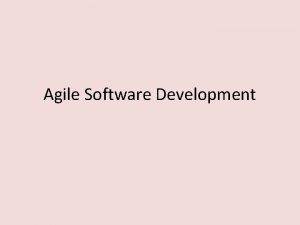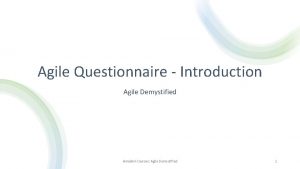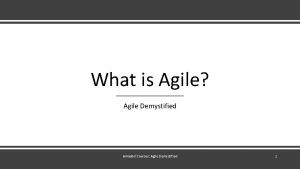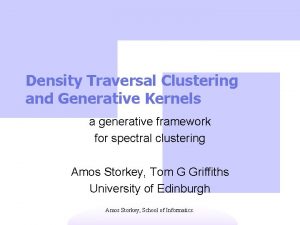Applying Model Driven Design Generative Programming and Agile

















- Slides: 17

Applying Model Driven Design, Generative Programming, and Agile Software Techniques to the SDR Domain OOPSLA '05 San Diego, CA Oct 17, 2005 Dominick Paniscotti Bruce Trask Angel Roman Vikram Bhanot

What is a Domain Specific Language? In order to understand DSLs, one must understand levels of modeling DSLs are defined using Meta-Models are defined using even higher level models So, a Domain Specific Language is… A language targeted to a particular problem Meta Object Format Meta-Model instance of UML Interface Meta-Model instance of CF: : Resource Type: string Model ID: string Such as Software Defined Radios Not a general purpose language aimed at any kind of problem Such as UML Slide 2 Copyright © Prism. Tech 2005 instance of Voice CODE C Object

Domain Specific Modeling DSLs allow simplified modeling in the Problem Space vs. complex modeling in the Solution Space Modeling Problem Space Modeling Single CF: : Resource with 2 Port and 2 Properties Slide 3 Copyright © Prism. Tech 2005

Domain Specific Modeling Editor Generator Language Slide 4 Copyright © Prism. Tech 2005

Families Of Systems Focus on System Families allows one to identify the commonalities and variablities found across family members And develop DSLs to: Factor out common behavior into paramaterizable abstractions Provide extension mechanisms to incorporate variation points found across family members And further develop generators to synthesize concrete functionality for a particular family member Slide 5 Copyright © Prism. Tech 2005

Radio Families Commonalities Properties Tests Life Cycle Communications Path Deployment Functionality (Routing, Networking) Basic architecture Slide 6 Copyright © Prism. Tech 2005

What the SCA has done … and has not SCA isolated the commonalities and variabilities but did not provide a DSL in which to program these things No generators So to really complete the picture, need generators to handle practical use and to map against the variabilities The SCA provides the necessary abstractions and framework of patterns (Extension Object with component Configurator) as well as the deployment and configuration engine. What is needed now are the remaining artifacts to make this particular solution complete. Slide 7 Copyright © Prism. Tech 2005

Providing the remaining steps Allow programmers to program in the higher order domain by Providing a domain specific grammar Graphical representations of this grammar Automatic constraint engines to ensure the use of the grammar is correct Automatic generations engines transform the resulting model to various targets along varying dimensions Weave together various complex aspects of the domain Slide 8 Copyright © Prism. Tech 2005

The steps In general In our domain Isolate the abstractions and how they work together The SCA Create a formalized grammar for these - DSL Create a formalize SCA meta-model Create a graphical representation of the grammar – GDSL Create a SCA specific graphical tool Provide domain-specific constraints – GDSCL, DSCL Program into the tool the constraints Attach generators for necessary transformations C++, C and VHDL generators Slide 9 Copyright © Prism. Tech 2005

Domain Specific Language <? xml version="1. 0" encoding="ASCII"? > <com. prismtech. spectra. sdr. sca 2_2. models: Assembly xmi: version="2. 0" xmlns: xmi="http: //www. omg. org/XMI" xmlns: xsi="http: //www. w 3. org/2001/XMLSchema-instance" xmlns: com. prismtech. spectra. sdr. sca 2_2. models="http: //com. prismtech. spectra. sdr. sca 2_2. models "> <components Name="Bit. Flipper" organization="Prism. Tech" id="DCE: 8 f 647411 -91 a 1 -4295 -bbc 66 d 3 eff 4982 f 7"> <ports xsi: type="com. prismtech. spectra. sdr. sca 2_2. models: Uses. Port" instance. Name="TX" name="Data"/> <ports xsi: type="com. prismtech. spectra. sdr. sca 2_2. models: Provides. Port" instance. Name="RX" name="Data"/> </components> </com. prismtech. spectra. sdr. sca 2_2. models: Assembly> Slide 12 Copyright © Prism. Tech 2005

A Graphical Domain-Specific Language Images, layout, organization based on meta-model <components Name="Bit. Flipper" organization="Prism. Tech" id="DCE: 8 f 647411 -91 a 1 -4295 -bbc 6 -6 d 3 eff 4982 f 7"> <ports xsi: type="com. prismtech. spectra. sdr. sca 2_2. models: Uses. Port" instance. Name="TX" name="Data"/> <ports xsi: type="com. prismtech. spectra. sdr. sca 2_2. models: Provides. Port" instance. Name="RX" name="Data"/> </components> </com. prismtech. spectra. sdr. sca 2_2. models: Assembly> Slide 13 Copyright © Prism. Tech 2005

Declarative Specification/Programming Both the DSL and GDSL are declarative in nature Involves programming by setting properties, making connections and establishing relationships Versus imperative sequential procedural instructions 1 “Declarative programming improves productivity and quality because it is another form of reuse of preprogrammed, prevalidated logic” 1 1 Model Driven Architecture D. Frankel, Wiley 2003 Slide 14 Copyright © Prism. Tech 2005

Processing the Declarative Specification Enforce constraints on input Interpreting it as it is entered After interpretation, have the declarative specification drive code generators which will transform the model into an executable form for a given platform Slide 15 Copyright © Prism. Tech 2005

Domain-Specific Constraints Enforce structural compositional, directional, etc constraints. Preconditions, postconditions and invariants Slide 16 Copyright © Prism. Tech 2005

Generators Translate from declarative to imperative Code Coverage C++ VHDL Slide 17 Copyright © Prism. Tech 2005 Test Cases

The Benefits The SCA portability standardized development Meta-model – Domain Specific Language more productivity GDSL easy to use and communicate to others Constraints left shift defects from run-time to modeling time Harness the inherent flexibility provided by the SCA Generators 1 Model Productivity Portability Correctness Architectural consistency A coordinated set of design patterns 1 Requirements traceability Synchronization of software artifacts e. g. documentation Automated testing = increased robustness Allow the marriage of design artifacts with development artifacts Driven Architecture D. Frankel, Wiley 2003 Slide 19 Copyright © Prism. Tech 2005

Contact Info www. Prism. Tech. com Angel - ar@prismtech. com Vikram - vb@prismtech. com Dominick - dp@prismtech. com Bruce - bt@prismtech. com Slide 22 Copyright © Prism. Tech 2005
 Agile model driven development amdd
Agile model driven development amdd Applying agile approach in erp implementation
Applying agile approach in erp implementation Using risk to balance agile and plan driven methods
Using risk to balance agile and plan driven methods Generative design grasshopper
Generative design grasshopper Sequential program and an event-driven program?
Sequential program and an event-driven program? Nlp generative model
Nlp generative model Lda generative model
Lda generative model Agile supply chain framework
Agile supply chain framework Event driven programming paradigm
Event driven programming paradigm Event driven programming in java
Event driven programming in java Event driven programming in java
Event driven programming in java Extreme programming in agile
Extreme programming in agile Scott adama
Scott adama Generative linguistics and cognitive psychology
Generative linguistics and cognitive psychology Sternberg's successful intelligence theory and wics model
Sternberg's successful intelligence theory and wics model Vb mapp graph
Vb mapp graph Competence vs performance in linguistics
Competence vs performance in linguistics Generative grammar
Generative grammar
